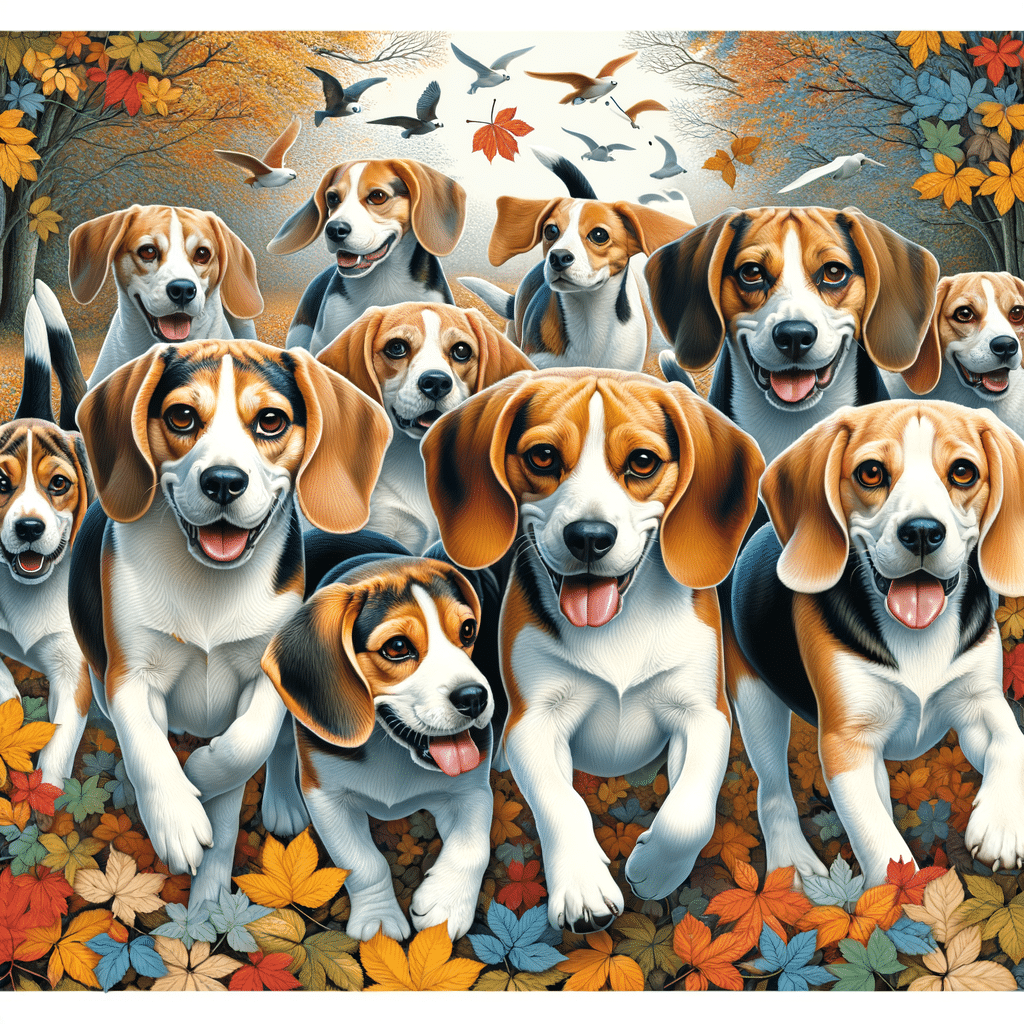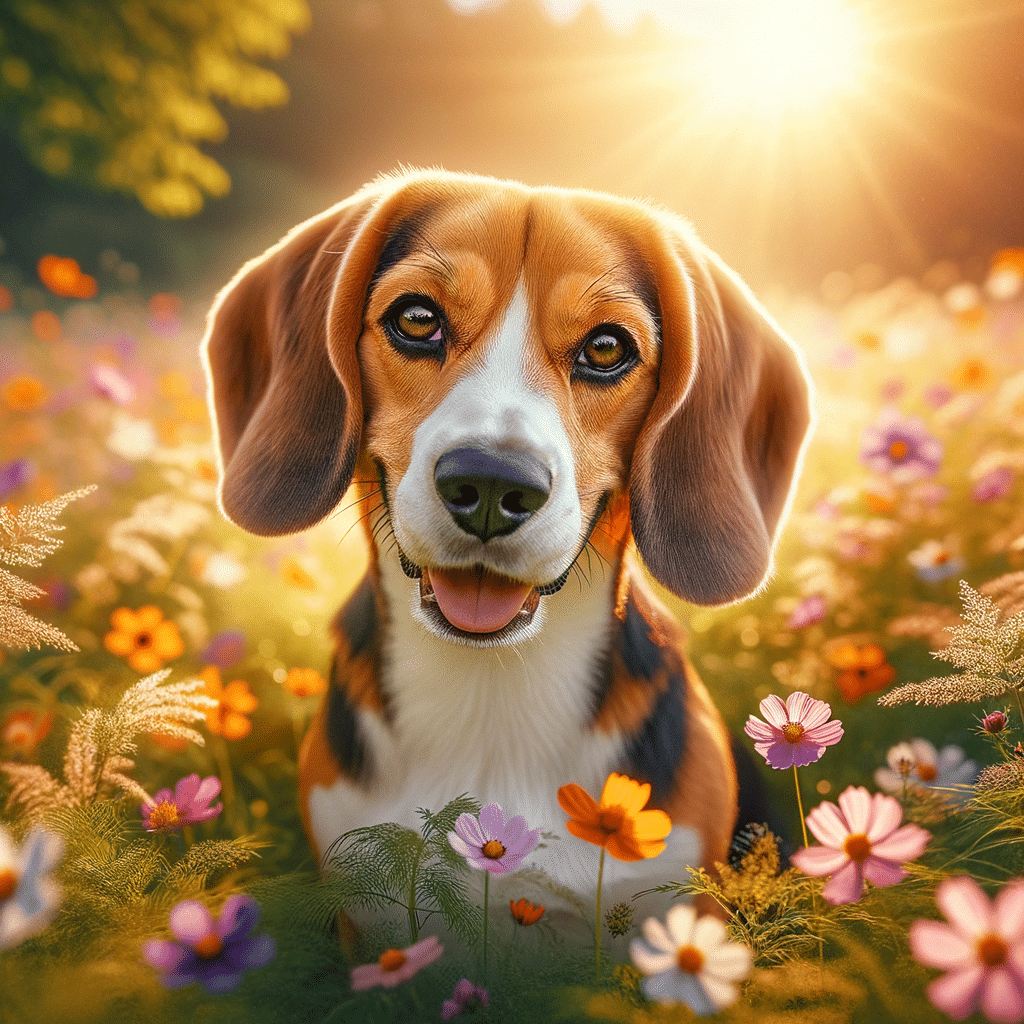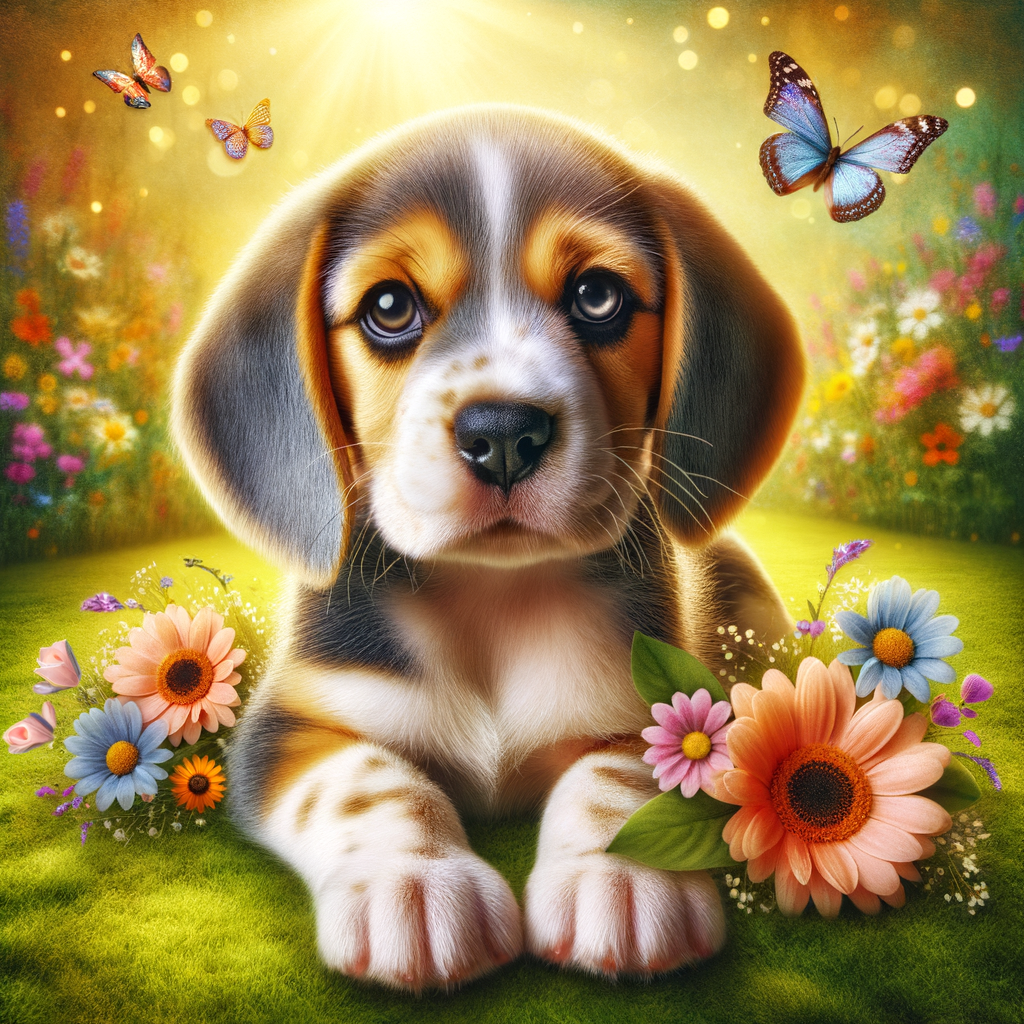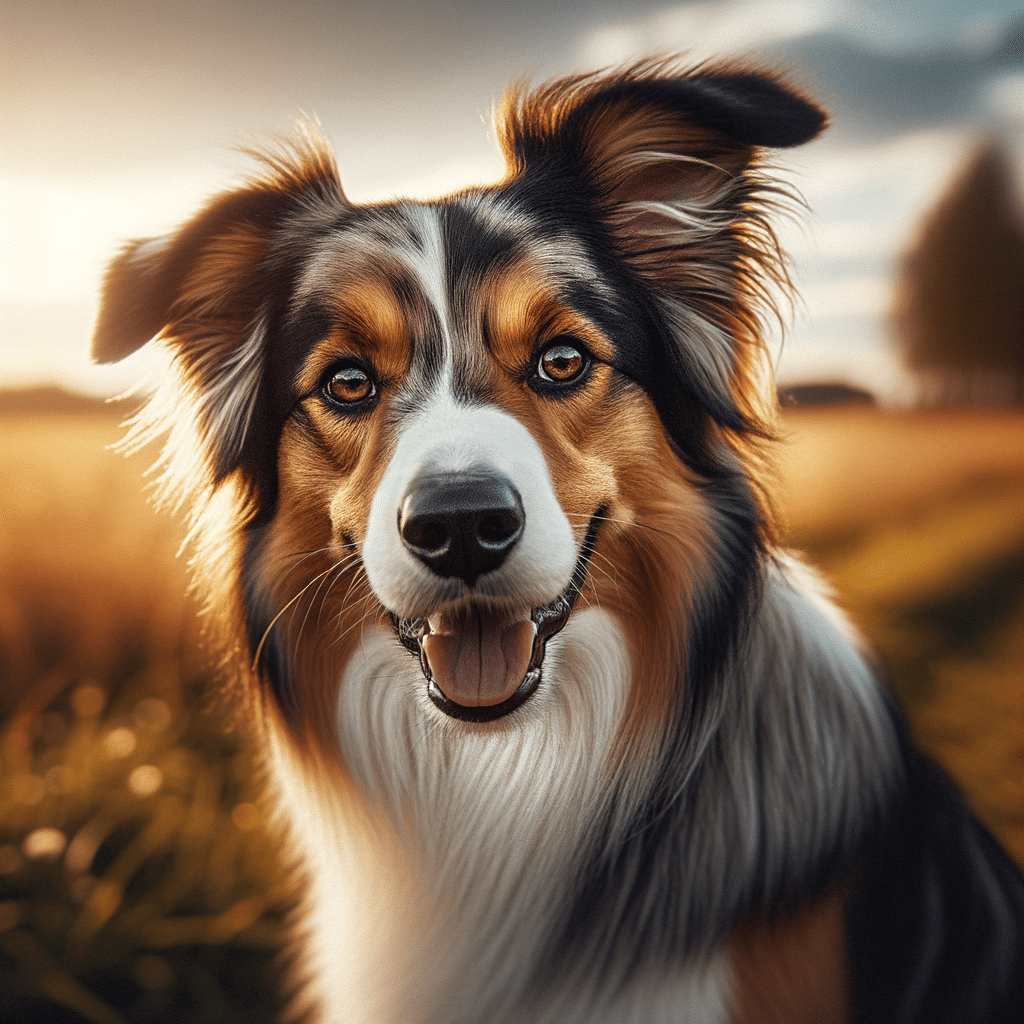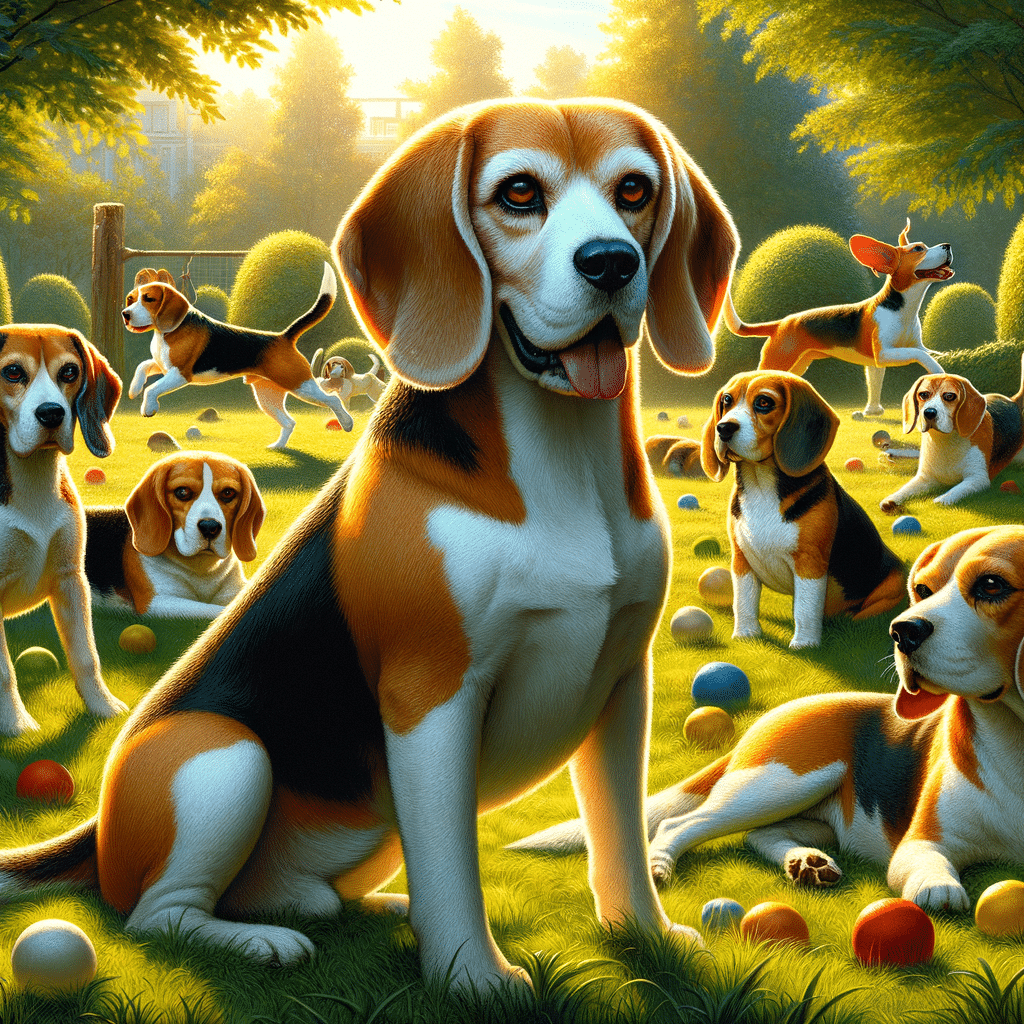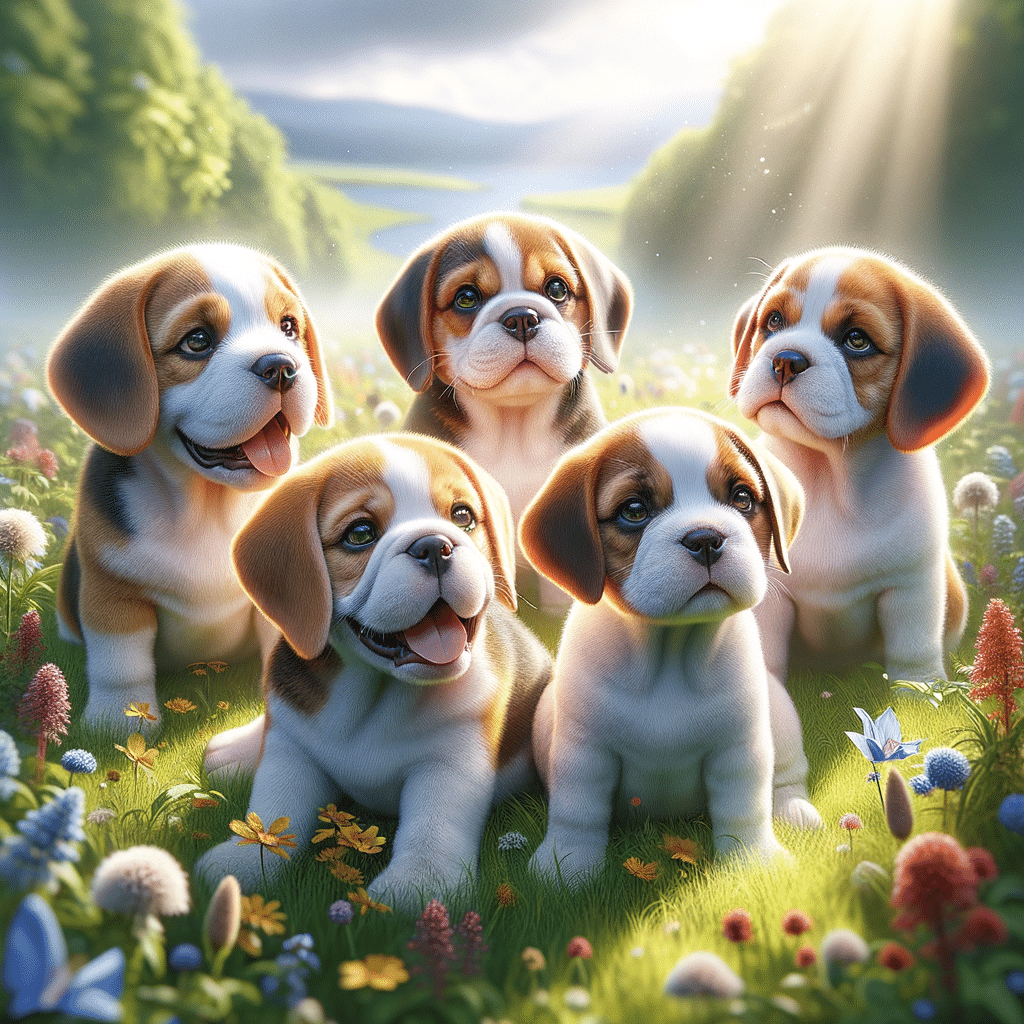The beagle pug mix, often called a “puggle,” is a designer dog breed renowned for its charming personality and appealing physical traits. This hybrid combines the best of both worlds by meshing the loyal and exploratory spirit of the beagle with the affectionate and companionable nature of the pug. Its growing popularity can be partly attributed to celebrity endorsements and the breed’s media presence, which has spotlighted this loving and quirky canine companion.
In This Article
One of the main attractions of the beagle-pug mix is its manageable size and adaptable lifestyle, which makes it a suitable pet for various living situations, including apartments and larger homes. With a friendly demeanor and a face many find irresistible, the puggle dog has steadily climbed the ranks of favored pet choices for dog lovers. While its popularity soars, prospective owners must consider the breed’s maintenance, including health care, grooming, and the need for consistent training.
Key Takeaways
- The puggle is a crossbreed known for its affectionate nature and compatibility with various lifestyles.
- Regular health checks and grooming are essential due to inherited traits from the beagle and pug parent breeds.
- Despite their popularity, puggles require committed training to manage their energetic and occasionally stubborn temperament.
Breed Origins and History
The puggle is a distinct crossbreed that has gained popularity due to its unique blend of the beagle’s hunting heritage and the pug’s royal background. This section delves into the historical tapestry that led to the creation of the puggle.
Beagle History
The beagle’s origins trace back to England in the 16th century, primarily bred for hunting due to their keen sense of smell and high stamina. They were adept at tracking rabbits and other small prey. Over time, beagles evolved from hunting hounds to become one of North America’s most beloved companion dogs.
Pug Heritage
Contrastingly, the pug breed has ancient roots extending to Chinese royalty. Originating in China, pugs have been cherished for centuries, gracing the laps of emperors with their distinctive features. Known for their friendly and gentle demeanor, pugs were later introduced to Europe, where they maintained their status as favored designer dog pets among the aristocracy.
Birth of the Puggle
In the 1980s, a breeder named Wallace Havens from Wisconsin innovated the crossbreeding of a purebred pug and a purebred beagle, resulting in the first puggle. He intended to combine the desirable traits of both breeds while mitigating their less favorable characteristics. The puggle gained recognition when it was registered with the American Canine Hybrid Club, and by the early 2000s, the puggle breed had entered the commercial pet market, their appeal partly due to the balance of the beagle parent’s energy and the pug parent’s companionship.
Physical Characteristics and Temperament
The beagle and pug mix, commonly known as a puggle, presents a captivating blend of physical characteristics and a temperament that appeals to many dog lovers. They are known for their manageable size, distinctive coat colors, and endearing personality traits, making them ideal companions that fit well into diverse home environments.
Appearance
Puggles typically are from 10 to 15 inches in height, inheriting traits from both the pug and beagle. They commonly weigh between 14 to 35 pounds, with a sturdy and compact build. Their ears are often a notable feature; they tend to have the floppy ears of a beagle, which add to their expressive and appealing nature.
Personality
The temperament of the puggle mix features a balance of the pug’s affectionate nature and the beagle’s friendly disposition. They are known to be exceptionally playful and affectionate, striving for attention and companionship. Their persona shines as a quintessential family dog that is loyal and good-natured.
Coat and Colors
Their coat is generally short and smooth, a feature that simplifies grooming requirements. The puggle’s color palette often includes a variety, from black, white, and brown to shades of fawn and tan inherited from its parental breeds.
Despite having a short coat, the puggle breed possesses a double coat, which may lead to moderate shedding. The color spectrums of the beagle and pug contribute significantly to the puggle’s appearance, sometimes featuring the rich, multi-color patterns of the beagle or the solid hues of the pug.
Health and Care
Beagle and pug mixes, commonly known as puggles, require informed care and pet insurance to maintain their health and well-being. Owners should prioritize their unique health concerns and grooming needs.
Common Health Concerns
Puggles can inherit health problems prevalent in their parent breeds. Hip dysplasia is a common issue where the hip joint does not fit perfectly, leading to arthritis or lameness. Regular exercise is crucial but should be moderated to prevent joint stress. Monitoring their nutrition is essential due to their propensity to gain weight, which can exacerbate health issues.
Notable Health Conditions:
- Epilepsy: A neurological disorder that can cause seizures.
- Cherry Eye: A prolapsed third eyelid gland that often appears as a reddish mass in the corner of the eye.
- Pug Dog Encephalitis (PDE): An inflammatory brain disease that is unfortunately common in pugs and can be passed down to puggles.
Owners should ensure their puggle has regular checkups with a veterinarian to manage these concerns and maintain a healthy lifestyle. Early detection through regular vet visits can lead to better management of these underlying conditions.
Grooming and Maintenance
Grooming a puggle doesn’t only keep them looking their best, but it also serves as a check for potential health issues. Their coat, usually short to medium, requires regular brushing to remove loose hair and distribute natural fats that keep their skin healthy.
Grooming Checklist:
- Teeth: Regular brushing to prevent dental issues.
- Eyes: Routine checks for early signs of cherry eye or other issues.
- Nails: Regular trimming to prevent discomfort and mobility issues.
- Ears: Cleaning to prevent infections, which beagles are prone to due to their floppy shape.
Puggles also benefit from a diet that maintains their ideal body weight to minimize strain on their joints. Owners should consider foods with balanced nutrients, where fats are provided but kept in check to avoid obesity.
Behavioral Traits and Training
The beagle and pug mix inherits behavioral traits from its parent breeds. These dogs are known for their loving and sweet disposition, with a dash of the beagle’s curiosity and the pug’s friendly nature. Training this mixed breed requires patience due to their intelligent yet occasionally stubborn streak.
Training Your Dog
puggle training should start early and make use of positive reinforcement techniques. Their intelligence can be a double-edged sword; they learn quickly, but their independent nature sometimes makes them stubborn.
- Consistency is key. Regular training sessions will help ingrain obedience and good behavior.
- Use rewards, such as treats or praise, to encourage desired behaviors.
Due to their affectionate nature, puggles respond well to attention and are motivated by reinforcement that promotes a positive relationship.
Exercise requirements are moderate. Daily walks and time for play are essential to keep them mentally and physically stimulated. Without enough exercise, a puggle may exhibit mischievous behavior.
Social Behaviors
Puggles generally display a gentle temperament, suitable for families with children and other pets, making them one of the most popular dog breeds. They are friendly, enjoying companionship and playtime. Hence, they fit well into the family dog category.
- Early socialization is vital to prevent the development of separation anxiety.
- Puggles may exhibit a howl typical of a beagle and mild barking.
- They can be loving companions when appropriately introduced to kids and other animals.
A puggle’s size makes them suitable for house and apartment living. However, their exercise needs should not be underestimated to maintain a healthy weight and prevent behavioral issues. Properly feeding them quality dog food tailored to their size and activity level is also crucial for their overall well-being.
Puggle training is needed for the dog to thrive within a household hinges on understanding their mixed heritage traits and addressing them with patience and consistent positive reinforcement.
Frequently Asked Questions
In this section, we address some of the most common inquiries about puggles, providing prospective owners with essential information on lifespan, cost, temperament, barking habits, sociability, and unique appearance traits of black puggles.
What is the average lifespan of a puggle?
Puggles generally enjoy a lifespan of around 12 to 14 years. This is influenced by various factors, including diet, exercise, and inherited health conditions.
How much does a puggle typically cost?
The price of a puggle can vary widely, but they typically range from $600 to $2,000. Factors influencing cost include breeder reputation, location, and pedigree.
What is the general temperament of puggle dogs?
Puggles are known for being friendly, affectionate, and playful. They make excellent companions and adapt well to family life, enjoying interaction with their human counterparts.
Do puggles bark more than other breeds?
Puggles may bark moderately frequently; they inherit vocal traits from both beagles and pugs. They’re likely to express themselves with barks, howls, and whimpers, especially if they seek attention or are bored.
What distinguishes the appearance of a black puggle from other color variations?
Black puggles possess either an entirely black coat or a black coat with color markings, setting them apart from other puggles, which may exhibit tan, fawn, or multi-color coats. Their distinct coloration is drawn from their pug heritage.
